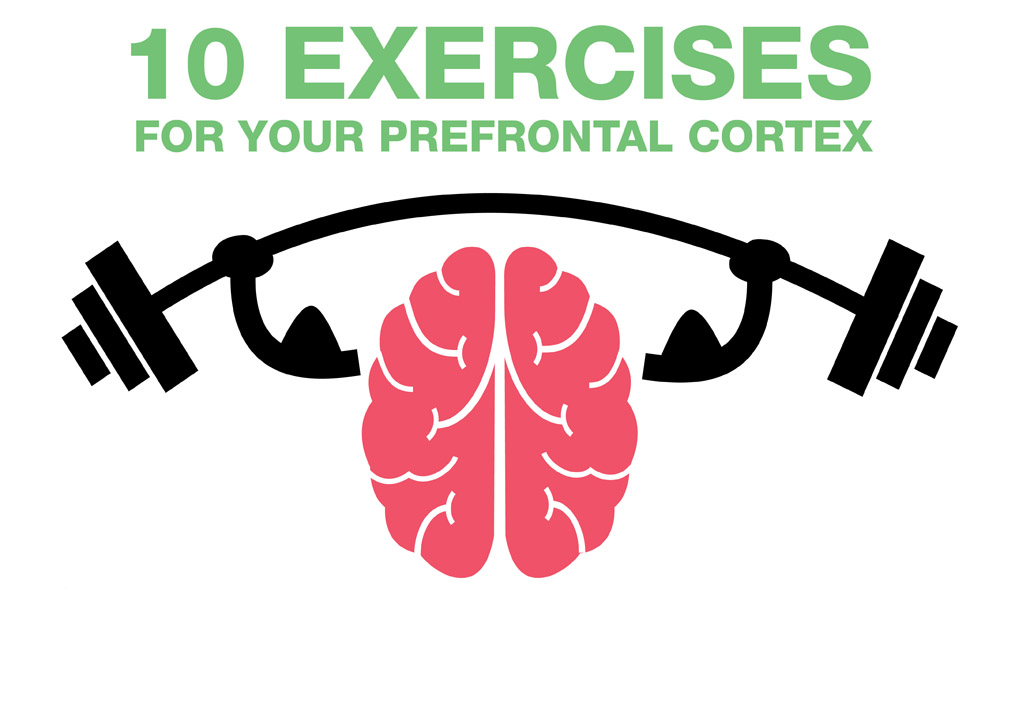 The brain has the amazing ability to change and improve itself. Peak brain development[1] occurs in the early years (0-3), and again between the ages of twelve and twenty-four. We now know that humans also have the ability to continue to improve brain function throughout life. The part of the brain that is key to reasoning, problem solving, comprehension, impulse-control, creativity and perseverance is the prefrontal cortex. These functions (called Executive Functions) are needed when we have to focus and think, mentally play with ideas, use our short-term working memory, and think before reacting in any situation.
The brain has the amazing ability to change and improve itself. Peak brain development[1] occurs in the early years (0-3), and again between the ages of twelve and twenty-four. We now know that humans also have the ability to continue to improve brain function throughout life. The part of the brain that is key to reasoning, problem solving, comprehension, impulse-control, creativity and perseverance is the prefrontal cortex. These functions (called Executive Functions) are needed when we have to focus and think, mentally play with ideas, use our short-term working memory, and think before reacting in any situation.
Evidence shows that a well-developed prefrontal cortex with strong Executive Functions can improve both academic and life outcomes. But very little sweat need be shed while “exercising” our prefrontal cortex. What it takes is intentional use and practice of the Executive Functions. The fun part is that the workout is most effective when you feel socially supported, happy, relaxed and are physically fit.
The following are 10 “exercise” choices for a prefrontal cortex workout:
-
Put on your rose coloured glasses. Create a positive future story; optimism is associated with rising levels of dopamine which engages the brain.
-
Follow a sleep routine. At the end of the day, choose a pleasant activity that brings your day to a peaceful end. Getting adequate sleep is connected with memory function.[2]
-
Deny the drama and avoid getting caught up in gossip, what-if's and theatrical reactions (other people’s too). Drama fires up the amygdala that gets the prefrontal cortex off its game.
-
Move your body with sports, dance, martial arts, yoga[3] or other active pursuits.
-
Find ways to express your gratitude. Gratitude activities increase positive emotions which then activates the prefrontal cortex.
-
Offer and receive physical contact. Give and take hugs to literally soothe the brain with calming inhibitory peptides.
-
Create silly sentences, acronyms and cartoons to help remember things. These skills call on the prefrontal cortex and Executive Functions to access working memory. By integrating jokes, riddles and puns you can also learn to think flexibly by shifting between different meanings and associations of words.
-
Play! Make-believe play, in particular strengthens Executive Functions.
-
Be of service and volunteer. The social and mental activity required sends blood rushing to the prefrontal cortex.
-
Learn to juggle. Learning any new and engaging activity fires off neurons in a positive way. Other activities that require focus and practice such as dancing, circus arts, music, and theatre[8] are predicted to significantly strengthen Executive Function.
In his book, Brainstorm, Dan Siegel discusses the accelerated brain changes during adolescence. Follow the link to watch him explain what is happening in the brain during the teen years.
In a University of California, Berkeley, study, participants improved their memory test scores by 10% when they repeated the test after having a nap. (Non-nappers saw a 10% decline in their scores). The researchers explain this phenomenon with an email analogy: “new facts enter your brain like e-mails arriving in your in-box. And as your in-box can overflow over the course of a day, so can your brain. During sleep, your brain shuffles recently received data into storage, creating space for fresh info.”
Sports benefit Executive Function by:
- improving fitness,
- requiring sustained attention,
- demanding use of the working memory and disciplined action.
In addition, joy, pride, and social bonding enhance neural activity.
Follow the link to watch author and psychologist Dan Seigel describe the brain under stress and how we can help manage strong emotions by soothing the prefrontal cortex with neural peptides.
A Johns Hopkins study found that older women who volunteered as tutors for six months developed sharper cognitive skills.
At Oxford University, researchers taught people to juggle and found the prefrontal cortex of the jugglers had a higher density of white matter (the fibers that let neurons communicate) after six weeks. Any new physical challenge that is practiced intently will likely have this effect.
Watch researcher Adele Diamond discuss dance, music, martial arts and circus performance as effective ways to strengthen Executive Function.
